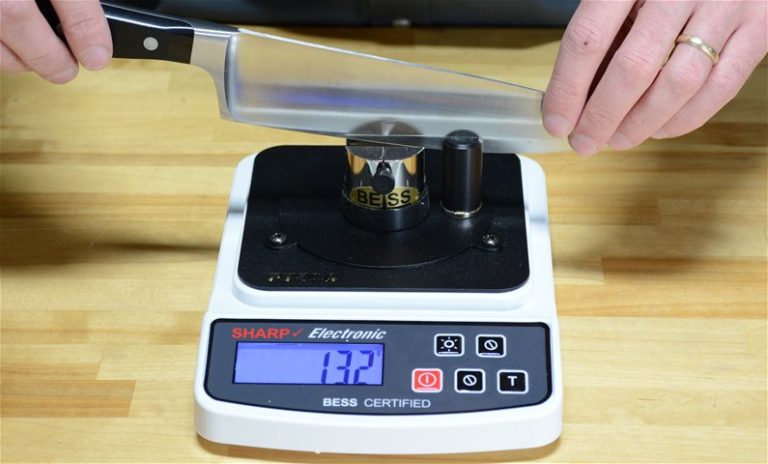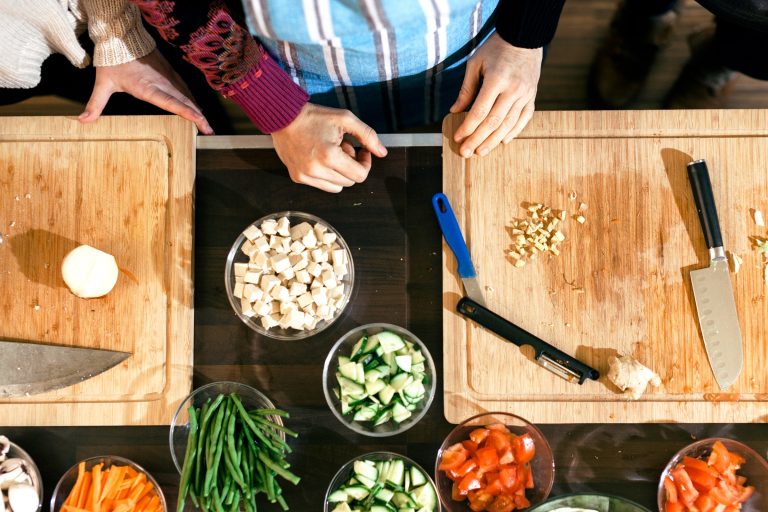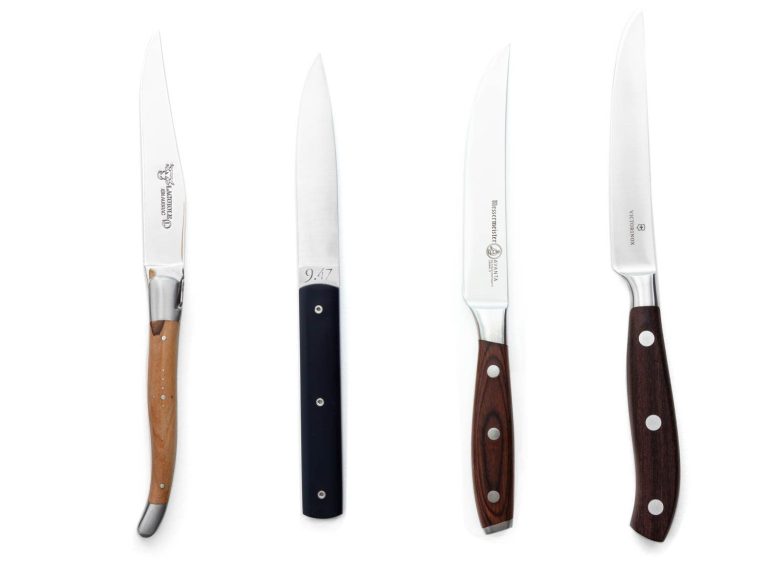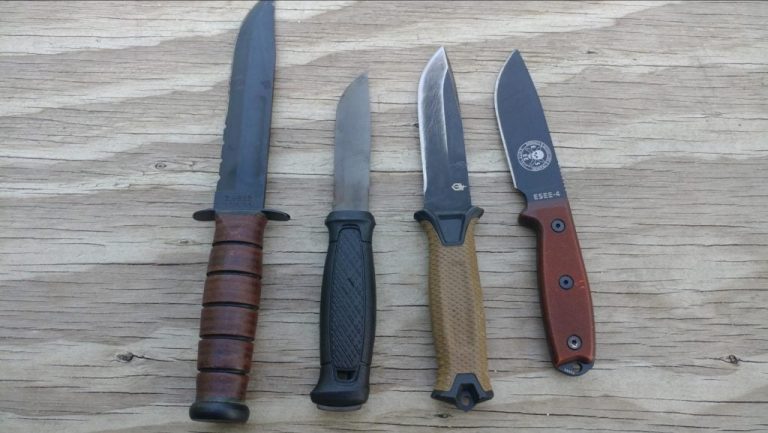What Knives Stay Sharp the Longest?
Knives with high carbon stainless steel blades stay sharp the longest. High carbon stainless steel blades retain sharpness for extended periods due to their durable and corrosion-resistant properties.
When properly cared for, these knives can keep a sharp edge for a long time. Knives are a fundamental tool in the kitchen, and it’s crucial to have a blade that remains sharp over time. One type of knife that stands out in terms of durability and sharpness is the high carbon stainless steel variety.
These knives possess the exceptional ability to retain their sharp edge for longer periods compared to others. The secret behind their longevity lies in their unique composition. The high carbon content adds strength, while the stainless steel combats corrosion. When combined, these qualities ensure that the knife stays sharp even with regular use. By taking proper care of these knives, such as regular sharpening and proper storage, you can enjoy the benefits of a sharp blade for a longer time.
Factors Affecting Sharpness
Factors such as the quality of the steel, blade angle, and maintenance practices can influence how long a knife stays sharp. The type and hardness of the steel used in the knife play a significant role in its durability and ability to retain sharpness over time.
Regular honing and proper knife storage also contribute to maintaining sharpness for longer periods.
Steel quality and composition:
- The quality of the steel used in the knife plays a crucial role in determining its sharpness and long-lasting edge. High-quality steels, like carbon steel or stainless steel, tend to retain their sharpness for a longer time compared to lower-quality steels.
- The composition of the steel, including the presence of certain elements like carbon or chromium, can significantly impact the knife’s sharpness. Steels with higher carbon content, for example, often have better edge retention.
Blade angle and edge geometry:
- The angle at which the blade is sharpened affects the knife’s sharpness. A narrower angle, usually between 15 to 20 degrees, will result in a sharper edge. On the other hand, wider angles, such as 25 to 30 degrees, offer more durability but may sacrifice some sharpness.
- The blade’s edge geometry, including its shape and curvature, can also affect its sharpness. Different knives, such as straight or serrated edges, have varying levels of sharpness. Serrated edges, for instance, can be challenging to sharpen but tend to stay sharp longer due to their multiple cutting surfaces.
Hardness and tempering:
- The hardness of the knife’s blade is another crucial factor influencing its sharpness. Harder blades, usually achieved through high carbon content or heat treatment, can provide better edge retention. However, extremely hard blades may also be more prone to chipping or breaking.
- Tempering, the process of heating and cooling the blade, can also impact its sharpness. Proper tempering helps balance hardness and toughness, resulting in a blade that retains its sharpness for longer without becoming too brittle.
Maintenance and care:
- Regular maintenance and proper care play a significant role in keeping a knife sharp for an extended period. Here are some essential practices to consider:
- Sharpening: Regularly sharpen the blade using appropriate tools like sharpening stones or honing rods to maintain optimal sharpness.
- Storage: Store knives in a safe and dry environment, preferably using knife guards or blocks to protect the edge from damage.
- Cleaning: Clean the knife after each use, ensuring it is dry before storage. Avoid using abrasive materials that may dull the blade.
- Avoid excessive force: Using a knife for tasks beyond its intended purpose or applying excessive force can dull the edge more quickly.
- Avoid hard surfaces: Minimize cutting on hard surfaces like glass or ceramic, as they can damage the blade and reduce sharpness.
By considering factors such as steel quality, blade angle, hardness, and maintenance, you can choose and care for knives that will stay sharp for the longest time possible. Remember, regular maintenance and proper handling are just as important as the initial quality of the knife.

Credit: kizaruknives.com
Best Knife Materials For Long-Lasting Sharpness
Crafted from high-quality materials such as Damascus steel or high carbon stainless steel, these knives are renowned for their exceptional sharpness and longevity. Their durable blades ensure that they stay sharp for a prolonged period, making them the best choice for those seeking long-lasting sharpness.
High-carbon stainless steel:
- High-carbon stainless steel is a popular choice among chefs and cooking enthusiasts due to its superior durability and long-lasting sharpness.
- This type of steel contains a higher carbon content, which makes the blade harder and more resistant to wear and tear.
- The stainless steel component helps prevent corrosion, maintaining the knife’s sharpness for an extended period.
- The combination of high carbon and stainless steel ensures that the blade can maintain its edge for a long time, reducing the need for frequent sharpening.
- Knives made from high-carbon stainless steel are versatile and can be used for various cutting tasks in the kitchen.
Ceramic blades:
- Ceramic blades are known for their exceptional hardness and sharpness, making them an excellent choice for long-lasting sharpness.
- Made from advanced ceramic materials like zirconium oxide, these blades are highly resistant to wear and retain their edge even with regular use.
- Ceramic blades do not react with acidic foods, preventing any metallic taste or discoloration.
- They are also lightweight, ensuring effortless and precision cutting.
- However, ceramic blades are more brittle compared to other materials, so they require careful handling to avoid chipping or breaking.
Laminated or layered steel:
- Laminated or layered steel knives are constructed by forging different layers of steel together, combining the best qualities of each material.
- This construction technique results in a blade that is both strong and resistant to corrosion.
- The high-carbon steel used in the core provides excellent sharpness and edge retention, while the outer layers add durability and flexibility.
- The layered construction also creates a unique aesthetic pattern, often referred to as Damascus or pattern-welded steel.
- Laminated or layered steel knives are favored by professional chefs and collectors for their exceptional performance and visually appealing design.
When considering the best knife material for long-lasting sharpness, high-carbon stainless steel, ceramic blades, and laminated or layered steel are top contenders. Each material offers unique advantages in terms of durability, sharpness, and resistance to corrosion. Ultimately, choosing the right knife material depends on individual preferences and the specific requirements of the kitchen tasks at hand.
Blade Edge Types For Prolonged Sharpness
Discover the blade edge types that can keep knives sharp for longer durations. Uncover the secrets to finding knives that maintain their sharpness for extended periods of time.
Have you ever wondered which knives stay sharp the longest? The key to long-lasting sharpness lies in the type of blade edge used. Different types of edges offer varying levels of durability and cutting performance. In this section, we will explore three popular blade edge types: straight edge blades, serrated knives, and hollow-ground blades.
Straight Edge Blades:
- Straight edge blades are the most common type of knife edge and offer excellent cutting precision.
- These blades have a smooth, continuous edge without any serrations or indentations.
- With a straight edge blade, you can achieve clean and precise cuts for a wide range of tasks.
- To maintain sharpness, it is important to regularly hone and sharpen the blade using a honing steel or a sharpening stone.
Serrated Knives:
- Serrated knives are equipped with a saw-like edge that features small serrations along the blade.
- These serrations provide better grip on slippery surfaces, making serrated knives perfect for slicing through foods with tough exteriors or delicate interiors.
- The serrations also help prolong the blade’s sharpness by reducing contact area, minimizing friction and wear.
- It is worth noting that serrated knives are more challenging to sharpen than straight edge blades. Specialized serrated knife sharpeners or a professional sharpening service are recommended.
Hollow-Ground Blades:
- Hollow-ground blades have a concave shape that creates a thinner cutting edge.
- This design reduces surface area, resulting in a sharper and more durable edge.
- Hollow-ground blades are commonly found in culinary knives, such as chef’s knives and Santoku knives, as they excel in precision cutting and slicing.
- To maintain their sharpness, regular honing and occasional sharpening are essential.
When it comes to the longevity of knife sharpness, considering the blade edge type is crucial. Whether you prefer the versatility of a straight edge blade, the functionality of a serrated knife, or the precision of a hollow-ground blade, understanding their unique characteristics will help you choose the best knife that suits your needs.
Remember to regularly maintain and care for your knives to ensure they stay sharp for longer. With the right blade edge type and proper maintenance, you can enjoy cutting with precision and ease for years to come.
Maintenance Tips For Long-Lasting Sharpness
Learn how to maintain the sharpness of your knives with these helpful tips. Discover which type of knives stay sharp the longest for optimal performance in the kitchen.
Keeping your knives sharp is essential for efficient and safe food preparation. With the right maintenance techniques, you can ensure that your knives stay sharp for longer periods. Here are some helpful tips to maximize the lifespan of your knives:
Regular Honing:
- Use a honing steel to realign the blade’s edge and maintain sharpness.
- Hold the honing steel at a 20-degree angle and draw the knife across the steel in a sweeping motion.
- Repeat this process on both sides of the blade for optimal results.
- Regularly hone your knives, ideally before each use, to keep them in top condition.
Proper Storage:
- Store your knives in a knife block, magnetic strip, or knife sheath to protect the blade’s sharp edge.
- Avoid storing knives loosely in drawers, as they can rub against other utensils and become dull.
- Make sure the blade is clean and dry before storing it to prevent corrosion or damage.
- Handle knives with care when retrieving or returning them to their storage to avoid accidentally dulling the blade.
Correct Cutting Techniques:
- Use the appropriate knife for each task to prevent unnecessary wear and tear.
- Employ a smooth slicing motion instead of applying excessive force when cutting.
- Avoid using your knives on hard surfaces like glass or stone, as this can cause them to chip or become dull.
- Use a cutting board made of wood or plastic to minimize the impact on the knife’s sharpness.
Sharpening Methods And Tools:
- When honing is no longer enough, it’s time to sharpen your knife.
- Various sharpening methods are available, including whetstones, manual sharpeners, and electric sharpeners.
- Whetstones require practice but offer precise control over the sharpening process.
- Manual sharpeners are a convenient option for quick touch-ups, but they may remove more material from the blade over time.
- Electric sharpeners are user-friendly and provide consistent results, but they can be pricier compared to other methods.
Remember, maintaining sharp knives not only enhances their performance but also promotes kitchen safety. By regularly honing your knives, storing them properly, using correct cutting techniques, and employing suitable sharpening methods, you can ensure that your knives stay sharp for extended periods, making your food preparation tasks a breeze.
Frequently Asked Questions On What Knives Stay Sharp The Longest?
What Knife Stays Sharp The Longest?
The knife that stays sharp the longest is one made with high-quality, durable materials.
Is There A Knife That Never Goes Dull?
Yes, there are knives that never go dull, thanks to advanced technology and high-quality materials.
What Knives Hold Their Edge The Longest?
Knives with high-quality steel like carbon or stainless steel hold their edge the longest.
Do Expensive Knives Stay Sharp Longer?
Expensive knives tend to stay sharper for a longer duration due to higher quality materials used.
Conclusion
To ensure your knives stay sharp for the longest time possible, it’s crucial to invest in high-quality materials and proper maintenance. Consider opting for knives made from stainless steel, as they tend to have excellent edge retention. Additionally, knives with a higher Rockwell hardness rating are also more likely to maintain their sharpness over a prolonged period.
Regular honing using a sharpening rod or honing steel, along with occasional sharpening using a whetstone or electric sharpener, can help maintain the longevity of your knives. Avoid using hard surfaces and dishwashers that can cause unnecessary wear and tear.
Lastly, always remember to store your knives in a safe and protective manner to protect their edges. By following these tips, you can ensure that your knives stay sharp and efficient for a longer time, making your cooking experience more enjoyable and hassle-free.







Hey just wanted to give you a quick heads up.
The words in your article seem to be running off the screen in Safari.
I’m not sure if this is a format issue or something to do with browser compatibility but I
thought I’d post to let you know. The design and style look
great though! Hope you get the problem fixed soon. Many thanks
This is a topic that is near to my heart… Cheers! Where are your contact details though?
I truly am usually working to stay current relating to the current medical resources about pregnant women, taking into
consideration that my personal occupation in life is a prenatal massage spa specialist.
When cooperating with this particular group, I actually notice that there may be certainly little which in turn any individual handful of women have in common outside of the undeniable fact that
they are simply currently pregnant. On the other hand, prenatal massage spa, prenatal yoga stretches, and moreover
employing a labor and birth doula are really hints which might be practically generally pertinent to achieve the best achievable
delivery ordeal.
Hi there this is kind of of off topic but I was wanting to know if blogs use WYSIWYG editors or if you have
to manually code with HTML. I’m starting a blog soon but have no coding skills so
I wanted to get guidance from someone with experience. Any help would be enormously appreciated!
I’m xtremely inspired with your writing abilities and also with
the format on your blog. Is that this a paid subject oor did you customize it yourself?
Either wayy keep up the excelloent high quality writing, itt is rare to
look a nice blog like this oone today..
구글기프트카드 할인
Hi there to every one, because I am truly keen of reading this weblog’s post to
be updated regularly. It carries pleasant material.
Persons in the present day really should try to study a great deal more with regards
to some of these subject areas, although there will never end up being enough hours.
Right after precious time for family and friends, and certainly holding a job, just
what time frame is left over to expend to researching these types of most beneficial instructions?
Being an individual utilizing postpartum massage therapy, together with developing internet websites and operating a
few computers, time is in fact a commodity that I don’t
ever have more than enough of. Quite possibly,
I will be capable of finding the spare time important to master this
powerful concept more specifically. Many thanks for giving this specific beneficial reference.
Thank you
I know this web site presents quality depending posts and
additional stuff, is there any other web page which presents
these things in quality?
I like your articles about the knives
Hello There. I found your blog using msn. This is a really well written article.
I will be sure to bookmark it and return to read more
of your useful info. Thanks for the post. I’ll definitely return.
Thanks for sharing your thoughts. I really appreciate your efforts and I will
be waiting for your next post thank you once again.
Thanks
always i used to read smaller articles or reviews that as well clear their motive, and that is
also happening with this piece of writing which I am reading at
this time.
Thank you for review
Knife king
Thank you